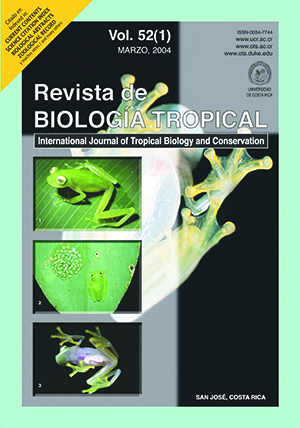Abstract
This species inhabits hot and acid environments. Euglena pailasensis sp. nov. main features are: the absence of flagella, the presence filaments like “pilis”, the presence of chloroplasts with pyrenoids crossed by several tylakoids, and acid and heat tolerance. Molecular phylogeny studies using 18S rDNA and Gap C genes indicated that the new species is related to E mutabilis. Its taxonomic characters based on morphology, biology and sequence of the 18S rDNA and Gap C genes are discussed and compared with other closely related species of the genus.
References
Sittenfeld A., M. Mora, J.M. Ortega, F. Albertazzi, A. Cordero, M. Roncel, E. Sánchez, M.Vargas, M. Fernández, J. Weckesser & A. Serrano. 2002. Characterization of a photosynthetic Euglena strain isolated from acidic hot mud pool of a volcanic area of Costa Rica. FEMS Microbiology Ecology. 42: 151-161.
Sánchez E., M. Vargas, M. Mora, J.M. Ortega, A. Serrano, E. Freer & A. Sittenfeld. 2004. Descripción ultraestructural de Euglena pailasensis (Euglenozoa) del Volcán Rincón de la Vieja, Guanacaste, Costa Rica. Rev. Biol. Trop. 52: 31-40.
Vismara R., L. Barsanti, P. Lupetti, V. Passarelli, D. Mercati, F. Dallai & P. Gualtieri. 2000. Ultrastructure of the pellicle of Euglena gracilis. Tissue & Cell 32(6): 451-456.
##plugins.facebook.comentarios##

This work is licensed under a Creative Commons Attribution 4.0 International License.
Copyright (c) 2004 Revista de Biología Tropical


